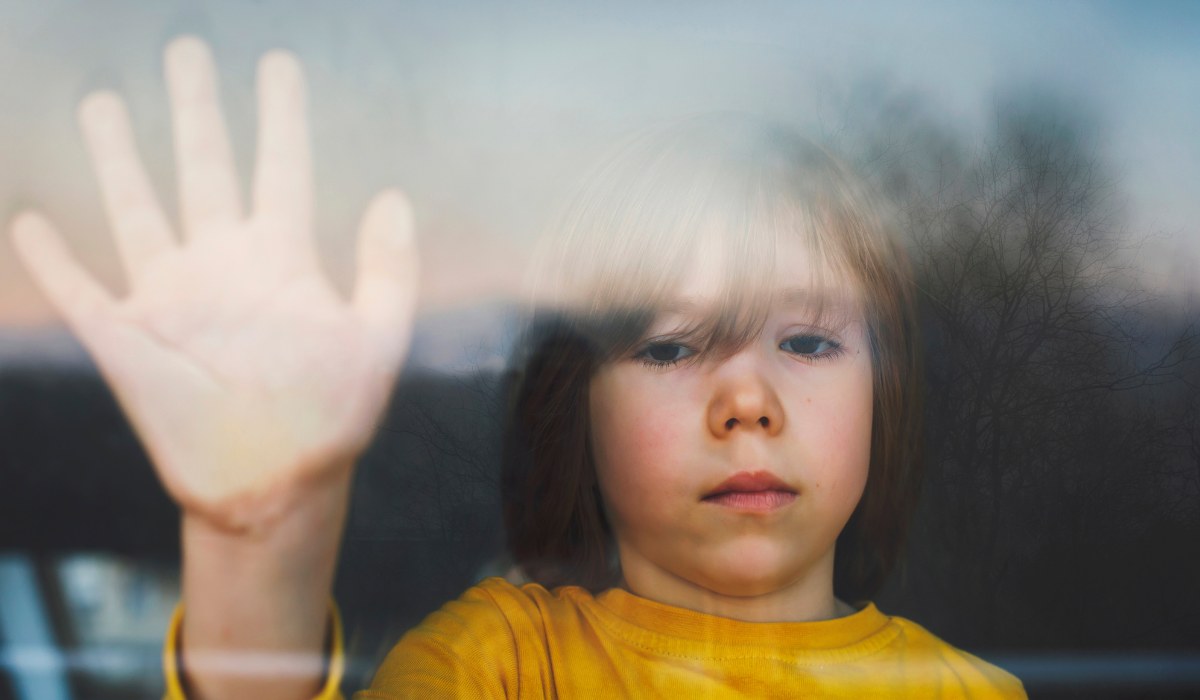Is Staring a Sign of Autism?
Unveiling the Truth About Gaze and Autism


Understanding Eye Contact and Gaze Patterns in Autism Spectrum Disorder
Gaze behavior is a complex and often misunderstood aspect of autism. Many parents and caregivers wonder if staring or the absence of eye contact signifies autism, or if atypical gaze patterns are merely developmental quirks. This article explores what gaze behaviors mean in the context of autism, how they differ from typical development, and offers guidance for supporting individuals with ASD.
Gaze and Eye Contact as Behavioral Markers in Autism

What does research say about gaze patterns in infants at risk for autism?
Recent studies using eye-tracking technology have revealed significant differences in the gaze behaviors of infants at risk for autism. Researchers tracked gaze patterns at multiple points between 2 and 24 months, emphasizing early signs that could predict later diagnosis. For example, they found that infants later diagnosed with autism showed a consistent decline in interest in looking at others' eyes from early infancy.
Typically developing infants scan objects around four to eight times per minute, respond to sounds within a couple of seconds, smile back at caregivers, and follow moving objects naturally with their eyes. In contrast, infants with autism tend to spend about half as much time focusing on eyes by 24 months. These early deviations in gaze patterns could serve as developmental markers, signaling emerging social impairments and offering a window for early intervention.
How do gaze behaviors differ between autistic and neurotypical children?
Children with autism tend to avoid direct eye contact, often focusing instead on other facial features such as the mouth or objects in their environment. This avoidance is linked greatly to neural activity; increased activity in the amygdala, a brain region involved in processing emotions, is associated with hyperarousal and gaze avoidance.
In neurotypical children, eye contact is natural and effortless during social interactions. They tend to look at faces, especially eyes, to gather social cues and reciprocate engagement. Autistic children, however, often show reduced gaze toward eyes, particularly during emotional or demanding interactions, which can hinder social development.
Interestingly, some recent research challenges the idea that all autistic individuals avoid eye contact entirely. During real social interactions, many may engage in asynchronous eye contact — looking at speaking or listening but not both simultaneously — a strategy to reduce sensory overload.
What are early signs of atypical gaze, like reduced interest in eyes?
Reduced interest in eye contact can appear as early as 2 to 6 months of age, especially in boys who later receive an autism diagnosis. This loss of interest is considered the earliest behavioral sign identified and is evident when infants show less gaze toward their caregivers' eyes over time.
Other signs include limited social gaze, prolonged fixation on objects or lights, and a preference for peripheral vision. These behaviors are often accompanied by other developmental concerns such as delayed speech, limited gestures, and reduced facial expressions.
Why is understanding gaze behaviors essential?
Recognizing atypical gaze patterns allows caregivers and professionals to identify early signs of autism before more overt behaviors manifest. Early detection facilitates timely interventions that can improve social and communication skills.
However, it’s crucial to remember that these signs are indicators to discuss with healthcare providers rather than definitive diagnostics. Gaze behaviors can also vary widely among individuals with autism, influenced by sensory sensitivities, neurological factors, and personal preferences.
How do eye-tracking tests help in early detection?
Four simple eye-tracking tests—object and image scanning, object and sound, social engagement, and following a moving object—have been developed to help parents and clinicians observe potential signs. Typically developing infants show consistent patterns, such as quickly turning toward sounds and following moving objects.
In contrast, infants at risk show less interest in social stimuli like faces and eyes and may not follow visual cues as effectively. Tracking these behaviors over time enables early recognition of developmental differences, which can lead to earlier support and intervention.
A summary of eye gaze behaviors in developmental stages
| Age Range | Typical Gaze Pattern | Signs in Autism | Additional Notes |
|---|---|---|---|
| Birth to 2 months | Focus on faces, follow moving objects | Less focus on eyes, avoidant | Early signs often minimal but observable with detailed monitoring |
| 2 to 6 months | Gaze at caregivers, respond to sounds | Diminished interest in eyes, reduced social gaze | Boys may lose interest in eyes earlier than girls |
| 6 to 12 months | Attend to faces, respond to name | Limited gaze to eyes, fixation on objects | Early intervention can influence social trajectory |
| 12 to 24 months | Imitate social cues, engage in joint attention | Continued gaze avoidance, object fixation | Signs often more pronounced, embedding sensory sensitivities |
Final thoughts on gaze and communication in autism
Gaze behaviors and eye contact are complex indicators influenced by neural, sensory, and social factors. Reduced or atypical eye contact is a hallmark of autism but is not universal.
Autistic individuals often develop their own ways of engaging socially, and understanding personal differences is crucial. Recognizing early signs, such as declining eye contact or limited social gaze, can lead to better support and acceptance.
By fostering awareness of how gaze functions in autism, caregivers, educators, and clinicians can create more inclusive environments and promote meaningful interactions tailored to individual needs.
Normal and Unusual Staring Behaviors in Child Development

What does staring normally look like for children during development?
In early childhood, children display specific gaze behaviors that are part of healthy development. During this period, infants and young children focus their gaze on faces, objects, or engage with their environment through visual exploration. For instance, typical infants scan objects approximately four to eight times per minute, which helps them gather visual information and learn about their surroundings.
They also turn toward sounds within two to three seconds, indicating growing auditory and visual integration skills. When prompted, children generally smile back at caregivers and follow moving objects with their eyes, demonstrating emerging social interest and coordination.
As they grow older, their gaze behaviors become more purposeful and socially driven. By age five, most children can make and sustain eye contact, respond to social cues, and participate in joint attention — the shared focus on objects or events. These skills are essential for effective communication, social learning, and emotional bonding, reflecting a natural progression in gaze and nonverbal communication.
Typically developing children also use eye contact to initiate interactions, express interest, and listen attentively in conversations. These milestones indicate healthy neural and sensory development, allowing children to navigate their social worlds effectively.
How do unusual staring behaviors manifest in children with autism?
Children with autism often show different patterns of gaze and staring behaviors that can serve as early signs of developmental concerns. Unusual staring can include prolonged vacant looks where the child appears to stare blankly without engaging with their environment. They might avoid social gazing or only look at faces for very brief moments.
Some children with autism exhibit fixation on lights, spinning objects, or bright patterns for extended periods, engaging in visual stimming behaviors that serve self-regulatory functions. Visual stimming can involve staring at lights, patterns, or spinning objects repeatedly — behaviors believed to provide sensory stimulation or comfort.
Such children may show preferences for peripheral vision over direct gaze and may seem preoccupied with specific objects or patterns, largely ignoring social stimuli like faces or gestures. This avoidance or fixation often coincides with delayed speech, limited use of gestures, and reduced facial expressions, highlighting difficulties in social communication.
Recognizing these signs early is crucial. Persistent unusual staring behaviors can signal underlying neurodevelopmental differences, necessitating assessment and early intervention. Understanding these behaviors helps caregivers and specialists support children with autism in developing social, communication, and sensory processing skills.
Understanding the Neural and Sensory Foundations of Gaze in Autism

What do studies say about neural activity in autistic individuals during eye contact?
Research highlights notable differences in brain activity when autistic individuals engage in gaze behaviors. Multiple studies using eye-tracking and neuroimaging techniques reveal that during eye contact, autistic individuals often show decreased activity in specific brain regions associated with social processing. Notably, the dorsal parietal cortex, fusiform face area (FFA), and superior temporal sulcus (STS) tend to be less active compared to neurotypical peers. A pivotal 2022 study demonstrated that these regions exhibit reduced neural responses during eye contact, correlating with behaviors such as gaze avoidance.
Additionally, the amygdala—an area implicated in emotional response and social cognition—often shows hyperactivity in autistic individuals, especially when viewing faces expressing fear or ambiguity. This hyperactivity is thought to contribute to heightened anxiety and discomfort, prompting gaze aversion as a protective response.
These neurological differences suggest that reduced eye contact in autism isn't merely behavioral but rooted in brain activity variations. They influence how sensory information is processed, how social cues are interpreted, and how emotional responses are managed, emphasizing the importance of considering neural mechanisms when understanding gaze behaviors in autism.
Gaze Behaviors and Social Interaction: The Bigger Picture

How do gaze and eye contact behaviors influence social interactions in autism?
Gaze and eye contact are fundamental elements of social communication. They serve as nonverbal cues that help regulate interactions, show interest, and convey emotions. In typical development, infants begin to follow faces and make eye contact between four and eight weeks, which is crucial for bonding and learning.
For autistic individuals, however, eye contact and gaze patterns often differ markedly. Many may avoid eye contact altogether or exhibit atypical gaze behaviors, such as staring at objects or patterns for extended periods. This avoidance can impede the understanding of social cues, reduce social engagement, and create misunderstandings with others.
Research indicates that reduced eye contact correlates with social difficulties, affecting relationship building and emotional connection. Conversely, when autistic individuals do engage in eye contact comfortably, it can enhance social functioning and communication.
Interventions that focus on improving gaze behaviors sometimes help individuals initiate and sustain interactions. These approaches may include social skills training and behavioral therapies aimed at encouraging more typical gaze patterns. Ultimately, the ability to adapt gaze behaviors influences the severity of social impairments and impacts overall social experiences.
What are effective strategies to support gaze development in autistic children?
Supporting gaze development involves creating an environment that respects the child's sensory sensitivities and emotional comfort. One approach includes using preferred objects, toys, or topics to naturally elicit eye contact. For example, engaging a child with a favored toy during play can encourage them to look towards social partners.
Incorporating routines that promote joint attention, like following a caregiver’s gaze or gestures, helps establish social connections without demanding immediate eye contact. Visual supports such as picture schedules or social stories can also facilitate understanding and engagement.
A key principle is to avoid forcing eye contact, as this can lead to anxiety or overload. Instead, therapists and caregivers can focus on eliciting brief glances or encouraging looking at the nose or lips, which pose less sensory challenge.
Gradual exposure, patience, and consistency are vital. For instance, rewarding even tiny steps toward eye contact can reinforce positive behaviors. Tailoring strategies to each child's interests and sensitivities increases the likelihood of success.
Therapies like behavioral intervention, sensory regulation, and social skills training are often combined to build confidence and comfort around gaze behaviors. These supports, delivered in a respectful and accommodating manner, can promote healthier social engagement and reduce anxiety associated with eye contact.
Additional factors influencing gaze and social communication in autism
Beyond behavioral strategies, research shows that neural activity differences, such as decreased engagement of the dorsal parietal cortex and less synchronization in social brain regions, underpin gaze avoidance. Sensory sensitivities, including hyper- or hypo-reactivity, also influence gaze behaviors, making some children more or less receptive to eye contact.
Addressing these underlying neural and sensory factors is crucial. Techniques like sensory integration therapy can help manage sensory overload, creating a more conducive environment for safe social gaze engagement.
In summary, supporting gaze development encompasses understanding individual sensory and emotional needs, using tailored, non-invasive strategies, and fostering a positive social environment. Such efforts can significantly improve social skills and enhance the quality of interactions for children with autism.
Addressing Cultural and Individual Differences in Gaze Expectations

Are there cultural differences in eye contact norms?
Yes, cultural norms play a significant role in shaping expectations about eye contact. In many Western societies, making direct eye contact during conversations is seen as a sign of attentiveness, honesty, and confidence. Conversely, in some Asian, African, or Indigenous cultures, avoiding direct gaze can be a sign of respect, deference, or humility. These cultural variations influence how eye contact is perceived and practiced.
For autistic individuals, these cultural differences complicate the interpretation of gaze behaviors. Behaviors considered typical or acceptable in one culture might be misunderstood or misjudged in another. For example, an autistic person from a culture where avoiding eye contact is respectful might be unfairly viewed as disengaged or shy if judged by Western standards.
Understanding these distinctions is crucial in fostering respectful interactions. Recognizing that gaze patterns are influenced by cultural backgrounds helps prevent misinterpretations and promotes inclusive communication. It also underscores the importance of cultural competence in supporting autistic individuals from diverse communities.
How should caregivers and practitioners approach gaze behaviors with respect to individual differences?
Caregivers and practitioners should approach gaze behaviors with sensitivity, focusing on the individual's comfort and preferences. It is important to understand that some autistic people may find eye contact uncomfortable or overwhelming due to sensory sensitivities or neurological differences.
Instead of enforcing normative standards, strategies should be flexible and personalized. This may include:
- Observing and respecting the individual's comfort levels with eye contact.
- Using alternative forms of communication, such as gestures, body language, or visual supports.
- Creating a relaxed, low-pressure environment that encourages engagement without forcing eye contact.
- Encouraging social skills development through meaningful interactions that do not solely focus on eye contact.
This respectful approach fosters trust, reduces anxiety, and supports social development. It also promotes self-acceptance and confidence, emphasizing that different styles of social interaction are valid.
Why is it important to recognize both cultural and individual variations?
Recognizing cultural and individual differences in gaze behaviors is fundamental to promoting respectful, inclusive interactions. It helps avoid misunderstandings and biases that can hinder social participation and support.
For autistic individuals, such understanding can prevent stigmatization and encourage tailored interventions that honor their needs. It also aligns with the principles of neurodiversity, emphasizing acceptance of diverse ways of communicating and relating.
By broadening perspectives beyond normative standards, caregivers and practitioners can create environments that are welcoming and supportive, facilitating better social experiences and emotional well-being for autistic individuals from all backgrounds.
| Aspect | Typical Norms | Autism Considerations | Cultural/Individual Variations | Supporting Approach |
|---|---|---|---|---|
| Eye Contact | Sign of engagement | May cause discomfort | Varies across cultures and individuals | Respect preferences; use alternative cues |
| Gaze Duration | Brief, directed | Often reduced or atypical | Cultural differences influence norms | Observe, adapt, and communicate flexibly |
| Gaze Purpose | Social connection, attention | Driven by sensory or communicative needs | Recognize cultural context | Foster understanding and patience |
| Responses to Gaze | Typical reciprocal reactions | May include gaze avoidance, fixation | Cultural expectations differ | Validate individual behaviors; promote comfort |
Understanding the multifaceted nature of gaze behaviors helps develop compassionate and effective support strategies tailored to each person’s background and preferences. It encourages a shift from rigid expectations to genuine engagement that respects diversity.
Early Detection and Intervention: The Role of Gaze Behavior Monitoring

Can gaze patterns help in the early detection of autism?
Yes, observing gaze patterns is an essential tool in the early detection of autism spectrum disorder (ASD). Research highlights that infants who are later diagnosed with autism often show differences in how they look at faces and objects from a very young age.
Between 2 and 6 months, baby boys who will go on to receive an autism diagnosis tend to lose interest in making eye contact with others. This decline in gaze towards eyes compared to peers is considered one of the earliest behavioral markers of autism identified to date.
Studies using eye-tracking technology have provided evidence that children with autism exhibit a steady decrease in interest in social stimuli such as eyes or faces as they grow older. By 24 months, their gaze time on eyes can be about half that of typically developing children.
Early signs like reduced eye contact, gaze aversion, and limited facial engagement can appear before overt behavioral symptoms are noticeable. Recognizing these signs allows caregivers and healthcare professionals to act swiftly.
Timely detection is crucial because it opens a window for early intervention. The sooner supportive therapies begin, the better the potential outcomes for social skills, communication, and overall development.
What technological methods support early diagnosis based on gaze?
Eye-tracking technology has revolutionized early autism detection. It involves using specialized equipment that records where and how long a child looks at specific stimuli.
By measuring how children scan objects, images, and faces, clinicians can identify atypical gaze behaviors. For example, typical infants usually scan faces thoroughly, turn toward sounds within a few seconds, and follow moving objects with their eyes.
In contrast, infants at risk for autism often show reduced interest in social cues and may focus instead on patterns, lights, or objects without engaging with faces or eye contact.
These eye-tracking assessments are performed at multiple ages, from 2 months up to 24 months, tracking developmental changes over time. They include tests such as:
- Object and image scanning
- Object and sound response
- Social engagement measures
- Following a red object or pattern
This data complements behavioral observations, providing a more objective measure that can confirm early risk signs.
Additionally, technologies allow researchers to study the neural mechanisms underlying gaze behaviors, enabling interventions tailored to each child's unique sensory and social profile.
The importance of timely intervention
Detecting autism early through gaze behavior monitoring enables early intervention, which is vital for improving long-term outcomes. When interventions start within the first few years of life, children often demonstrate significant gains in social communication and adaptive skills.
Early support may include therapies focused on enhancing eye contact, visual engagement, and social responsiveness. Techniques such as behavioral therapies, sensory integration, and parent training build on the strengths of each child.
Research supports that intervening during infancy or toddlerhood can modify developmental trajectories, reducing the severity of social impairments and fostering better integration into social environments.
Parents and caregivers play a critical role, and tools like eye-tracking not only aid clinical diagnosis but also help guide home activities that promote visual and social skills.
In conclusion, monitoring gaze patterns through advanced technology offers a promising pathway for earlier and more accurate autism detection. This approach facilitates timely interventions, improving the developmental prospects and quality of life for children on the spectrum.
Supporting Autism Awareness Through Understanding Gaze
Increased awareness and understanding of gaze and eye contact behaviors provide valuable insights for early detection, accurate diagnosis, and supportive interventions for autism. Recognizing that staring behaviors and gaze patterns are rooted in neurological differences helps dispel misconceptions and reduces stigma. Emphasizing individual preferences, respecting sensory sensitivities, and implementing personalized strategies foster more inclusive social interactions and enhance quality of life. As research continues to unravel the neural and developmental intricacies of gaze in autism, it remains vital for caregivers, educators, and clinicians to approach these behaviors with empathy, patience, and support, promoting acceptance and understanding in all social contexts.
References
- Four simple tests for early warning signs of autism - Mendability
- Classic sign of autism appears in early infancy, study says
- Is Your Child Staring a Sign of Autism? What Parents Need to Know
- Early Signs of Autism - UCSD Neurosciences
- Understanding the Autistic Stare: Meaning and How to Respond
- Autistics & eye contact (it's asynchronous) - Embrace Autism
- Visual Stimming: What can we do about it? - Healis Autism Centre
- The Stigma of Autism: When Everyone is Staring at You
- Should We Insist on Eye Contact with People who have Autism ...
Apply Now
At Grateful Care ABA, we are proud to offer the best ABA therapy services in Indiana. Armed with a team of skilled Board Certified Behavior Analysts (BCBAs), we bring years of experience to the table, making us the preferred provider for ABA therapy in our community.
Understanding that every child with ASD is unique and has unique goals and objectives, our ABA therapists carefully craft personalized ABA therapy plans that are tailored to meet the specific needs of each child. Whether your child needs help with reducing maladaptive behaviors, your child needs IEP support at school, you want your child to be self-sufficient at home, or something else, we use ABA therapy to work diligently toward specific goals. Together we can make a difference in your child’s life!
Contact us today to connect with an ABA therapist and learn more about ABA therapy solutions for your child.

.jpg)
.jpg)





.jpg)
.jpg)
.jpg)

.jpg)
.jpg)
.jpg)
.jpg)
.jpg)
.jpg)
.jpg)


















































































